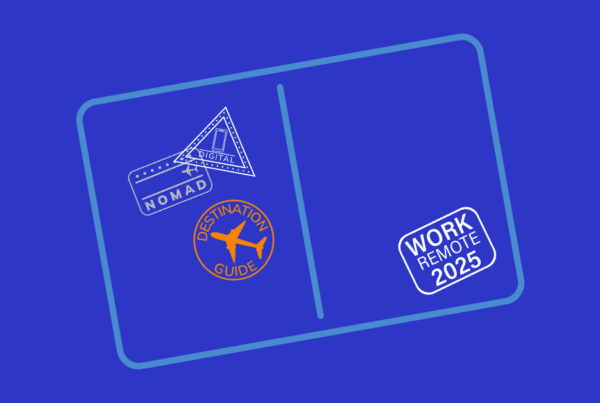
The hiring game has changed. And if companies want to survive, they’re going to need to change, too.
In 2020, the COVID-19 pandemic caused 114 million people to lose their jobs as a result of budgetary cuts made by employers to weather the pandemic. As a result, companies learned how to run off lean teams that utilized only a few full-time workers to staff teams and survive.
However, as the world moves past the initial shock on COVID and it becomes more a part of our everyday lives, employers are recognizing the need for skilled workers to stay competitive. Unfortunately, many are re-entering the hiring game with the same traditional mindset and much less luck. In July 2021, the NFIB Small Business Jobs Report found that a record-high of 48 percent of small business owners had unfilled job openings in May, marking the fourth consecutive month of record-high job openings.
The hiring world we re-enter today is no longer a simple ”post and they will come” situation, but a game where employers need to chase the talent. A few years ago, the hiring process was fairly simple for employers: write up a job description, post it to a job board, and wait for the applicants to stream in. It’s 2021 now, and the talent is done hunting down jobs themselves. Instead of aimlessly applying, they’re becoming more selective in which jobs they apply to – and they’re leading most of these decisions with their own wellbeing in mind. If a company isn’t on board with these values, it’s onto the next.
To make matters worse, talent isn’t rushing back toward the workforce after being let go from their previous jobs: six in ten respondents of a recent poll conducted by the U.S. Chamber of Commerce claim they’re in no hurry to return to the workforce, and three in ten don’t plan to return to work this year.
Companies aren’t used to the suddenly limited supply and shift of power toward the workers, as they push for flexibility, strong cultures, and remote work, to name a few.
So, how will this game shake out in the end and will it effectively change the way we hire forever? Let’s dive in to find out.
Talent wars recap
The ramifications the pandemic has on the global job market were incredibly damaging for both workers and organizations. Hundreds of millions of professionals left the workforce, some with a bitter taste in their mouth, and organizations had little to no other options but continue to push on with select staff.
The impact of losing a job so suddenly burned workers, and has made many question whether they enjoyed their previous role in the first place. A survey conducted by Morning Consult this March found that one in five workers changed their line of work in the past year, and a quarter of workers planned to look for a job with a new employer once the threat of the pandemic had subsided. In April, the U.S. Department of Labor reported that four million workers had done just that within one month, spurring a mass exodus of employees who no longer feel the traditional, 9-5 workplace fulfills their needs and desired lifestyle.
For employers, this can only bring trouble as skilled workers seek out roles that offer more personal fulfillment and challenge- and they’re looking to HR professionals to help.
The power positions have flipped and employers used to screening multiple candidates are now desperate. A McKinsey study conducted in 2020 found that a whopping 87 percent of organizations they surveyed said they were either already experiencing talent shortages or expected to face one within the next few years. Accelerated by the pandemic, the shortages facing employers are now much more complicated, with the push for flexibility and remote work coming from prospective talent, and making the attraction part of the process much more complicated.
Not only do companies need to find talent, they also must accommodate their needs if they want to compete against others in the market who are also in desperate need of talent. Human resources experts have been studying these trends to help companies adjust and score more hires, but to do so, employers will need to release their white-knuckled grip on tradition and give in to change.
And there is data to back up worker demands. In a survey conducted this year by Reward Gateway, 73 percent of workers seeking to leave their position said they would stay if offered more recognition and reward, and 96 percent of HR professionals agree these elements are vital to retaining talent. In a volatile job market, employers can’t skimp on treating their employees right, and a 2021 survey by Businesswire revealed that they’re listening, with 83 percent of HR leaders within companies agreeing that they will need to adapt what they offer to employees as a company to attract and retain excellent talent.
However, it doesn’t end with companies listening to workers: they also need to heed to a workforce that is shifting its form quickly and favoring independence above anything else.
Workers hold the power
The pandemic opened workers’ eyes to what they’ve deserved all along: flexibility and the freedom to not have their lives be dictated by a 9-5 job. We now have the data to show a connection between job productivity and working remotely, with 30 percent of workers saying they’re more productive when they are offered remote options, according to a survey by the Becker Friedman Institute. The flexibility that comes in tandem with remote work also enabled workers to use this productivity to their advantage, accomplishing tasks faster and having more time to have a life outside of work.
Now that workers have tasted a more flexible way of working, they’re placing these benefits above all else. In August 2021, a survey by Breeze found that a whopping 65 percent of workers would be willing to take a five-percent pay cut if they could work from home- a staggering stat, considering salary has been a large focus of the job hunt for decades. Some workers take it even a step further, with 40 percent of workers surveyed by Bloomberg in May saying they would quit their job if their bosses weren’t flexible around remote work. For employers this reveals the shift in values for workers, and sends a message loud and clear:
Remote is here to stay.
However, to continue attracting workers, it won’t be remote work alone that brings in applicants. A home office isn’t enough for workers who’ve been stuck in the corporate rut for years. Out of the era of remote work sprung a new movement: the shift toward freelancing. In 2020, Upwork reported that 59 million workers representing 36 percent of the U.S. workforce, an increase of 2 million freelancers since 2019. Of these freelancers, Upwork also found that 36 percent of them did so full-time; an 8 percent point increase from 2019. Looking ahead, the freelance workforce is expected to increase by 10 million: a survey by Businesswire discovered 20 percent of the workforce is considering freelancing to work remotely and gain flexibility.
So, what does all this mean for employers?
The modern worker yearns for independence and flexibility, meaning traditional benefits or even typical telecommuting policies won’t cut it for prospective talent. To bring in top-tier workers, employers need to go a step further and embrace flexibility in all aspects of their model, from offering flexible scheduling to full-time workers to embracing freelance talent as a part of their teams.
But freelancers don’t just stop at being a trend: for companies who are planning for the future, they’re an integral part of a successful workforce.
The future is flexible (and freelance)
For decades, there were two options when employers needed to hire a new employee: full-time and part-time. The time commitment was decided on by how much work and responsibility the role held, with the typical corporate role being full-time. However, either type of role doesn’t necessarily mean it’s more effective or productive for the company, and the workforce is outgrowing these two options.
The average worker is only productive for approximately three hours per day, according to a study of over 1,000workers by Vouchercloud. Although employers may think they’re getting more work out of full-time employees, they could be wasting money the talent is actually spending watching Netflix, scrolling through their phone, etc. simply to justify their time. Not only is money being wasted in these cases, but so is potential agility- for the price of one full-time employee (typically 1.25 to 1.4 times their salary, according to the U.S. Small Business Association), an organization could hire multiple freelancers to get work done for strictly the amount of time needed, rather than unnecessary eight-hour shifts.
And as the freelance economy grows, independent flexible workers are becoming more abundant than ever- and early adopters have already jumped on the bandwagon. In a 2020 report by the Harvard Business School that surveyed 7,000 organizations, 60 percent of executives said that they would increasingly prefer to rent, borrow, or share talent with other companies.
The bottom line is, freelancers allow for more agility and than relying solely on full-time workers that are already in shortage.
The number of job openings currently outpaces the amount of professionals in the market for work by one million vacancies, the Department of Labor found in August. Employers who are desperate for talent have two choices: either wait it out for full-time talent (and limit their organization’s growth) or tap into the expanding skilled freelance workforce to fill positions and gain unparalleled agility. And HR professionals agree: 73 percent of HR professionals are looking to maintain or expand their hiring of independent professionals, with nearly half of these professionals saying they are more likely to hire freelancers as a result of COVID-19, according to Upwork. For the sake of harmony between hiring managers and executives plus the potential for agility, companies will need to let HR lead the way toward a more flexible future.
The pandemic isn’t over, and the effects of it will be enduring, especially when we take a close look at the current state of the job market. For companies to succeed in the battle for talent, they need to allow HR teams to lead the charge in joining the flexible workforce revolution and embrace agility to continue to survive.
Alex Sixt is a creative professional specializing in content creation with a passion for all things marketing. Her professional experience includes developing marketing strategies, focusing on social media and content, for multiple industries. Outside of work, she loves spending time outdoors; all it takes is some time in the sunshine and a good hiking trail to make her happy.




